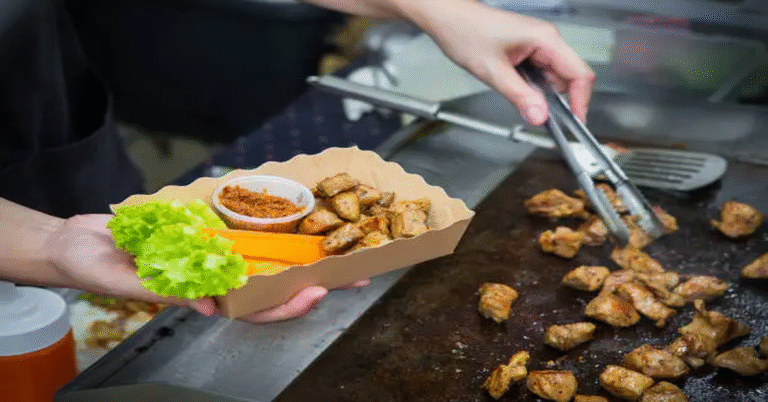
The word prosecchini carries an aura of cultural depth, heritage, and tradition. While it may not be universally recognized, within the contexts where it appears, prosecchini symbolizes a blend of identity, legacy, and continuity. Terms like this are often tied to local traditions, historical narratives, and shared practices that communities treasure for generations. Understanding prosecchini requires going beyond its literal meaning and exploring how it functions as a cultural expression, a representation of family heritage, and a beacon of community values.
Throughout history, societies have preserved their essence through rituals, food, architecture, and symbolic practices. Prosecchini, in its unique capacity, represents a convergence of these elements. It is more than an object or a practice—it is a phenomenon rooted in collective memory, bridging the past with the present. In this article, we will journey through its origins, symbolic meaning, social relevance, and future.
Historical Origins of Prosecchini
Every cultural term finds its roots in history. Prosecchini, too, is anchored in a past that reflects community survival, celebration, and resilience. Traditionally, it was associated with a set of practices that revolved around communal life. Whether it was a family ritual, a household centerpiece, or a marker of identity, prosecchini emerged as a symbol of belonging.
The materials used in its creation, the methods of preservation, and the way it was passed down across generations all highlight the deep sense of care attached to it. Communities valued prosecchini not only for its practical use but also for its symbolic relevance. Over centuries, it became woven into seasonal celebrations, rites of passage, and local heritage.
Symbolism of Prosecchini
At its core, prosecchini embodies values that are universal yet locally flavored. Its symbolism is multidimensional:
- Continuity of Tradition – It acts as a thread linking generations, reminding individuals of their cultural roots.
- Community Bonding – Prosecchini often appears in settings where people gather, reinforcing togetherness.
- Identity Marker – For communities, it serves as a cultural identifier distinguishing them from others.
- Spiritual Element – In some interpretations, prosecchini carries metaphysical meaning, symbolizing harmony and balance.
Thus, prosecchini is not only a practice or symbol but also a reflection of deeper human needs for belonging, continuity, and meaning.
Social and Cultural Importance
Prosecchini has always been central to cultural expressions. In family life, it acted as a unifying element, bringing members together during special occasions. Socially, it reinforced community values by becoming part of festivals, celebrations, and even problem-solving meetings.
One of the striking features of prosecchini is its adaptability. Communities molded its use depending on needs—sometimes domestic, other times ceremonial. This adaptability explains why prosecchini has not disappeared despite modernity. It has reshaped itself into new roles while keeping its cultural foundation intact.
Table: Prosecchini as a Cultural Phenomenon
| Dimension | Traditional Role | Modern Adaptation |
|---|---|---|
| Family Life | Multigenerational gatherings | Symbolic family heritage items |
| Community | Used in festivals and rituals | Displayed in cultural centers, exhibitions |
| Identity | Mark of belonging and roots | Cultural branding and tourism references |
| Spirituality | Harmony, continuity, sacredness | Inspiration for art and design |
Architectural and Artistic Representation
In many societies, prosecchini found a place in architecture and art. Traditional homes often displayed elements inspired by it, while artisans incorporated its motifs into pottery, textiles, or carvings. These artistic integrations symbolized endurance, stability, and cultural wealth.
In modern times, designers reinterpret prosecchini in contemporary architecture and interior design. It often appears in stylized motifs or abstract representations, combining modern aesthetics with ancient tradition. This not only honors the past but also ensures that prosecchini continues to inspire present-day cultural expressions.
Economic and Social Functions
Beyond symbolism, prosecchini also served practical economic functions. Families sometimes associated it with agricultural cycles, trade, or household management. In this way, it played a dual role: symbolic and functional.
In modern economies, prosecchini contributes to cultural tourism. Visitors are drawn to traditional practices, and prosecchini becomes a focal point for tours, workshops, and heritage exhibitions. This shift transforms prosecchini into an economic asset while still preserving its traditional essence.
Challenges to Preserving Prosecchini
Like many traditional practices, prosecchini faces challenges in the age of modernization and globalization. Key challenges include:
- Urbanization: Loss of rural communities where prosecchini thrived.
- Generational Gaps: Younger generations sometimes detach from traditional values.
- Economic Pressures: Families may not have resources to maintain traditions.
- Cultural Dilution: Globalized culture can overshadow local heritage.
Despite these challenges, prosecchini has shown resilience by adapting and finding new meaning in contemporary settings.
Preservation Strategies
Preserving prosecchini requires conscious cultural effort. Communities and governments can adopt strategies such as:
- Documentation: Recording stories, practices, and designs linked to prosecchini.
- Educational Integration: Introducing it into school curriculums as part of cultural studies.
- Cultural Tourism: Promoting heritage sites and museums that highlight prosecchini.
- Community Engagement: Organizing events and festivals centered on its symbolism.
Table: Preservation Approaches for Prosecchini
| Strategy | Method | Benefit |
|---|---|---|
| Documentation | Written records, multimedia archives | Prevents knowledge loss |
| Education | School programs, university studies | Engages youth, fosters pride |
| Tourism | Exhibitions, guided tours | Economic gain, cultural exposure |
| Community Involvement | Local festivals, storytelling circles | Revives traditions, strengthens bonds |
Prosecchini in Modern Relevance
Today, prosecchini is not limited to traditional settings. It appears in art exhibitions, academic discussions, and cultural branding. Designers reinterpret it in modern décor, while communities abroad preserve it as part of diaspora identity.
Furthermore, prosecchini has become a theme for interdisciplinary research, where anthropologists, historians, and sociologists explore its layered meanings. In popular culture, it serves as inspiration for films, literature, and digital media projects that seek to reconnect with roots.
The Future of Prosecchini
Looking forward, the future of prosecchini depends on balancing tradition and innovation. To survive, it must remain relevant to younger generations while preserving its core values. By integrating into modern lifestyles—through design, digital media, and community programs—prosecchini can continue to inspire.
If carefully preserved, prosecchini could evolve into a global symbol of cultural resilience, reminding people of the importance of heritage in shaping identity.
Conclusion
Prosecchini is more than just a traditional concept—it is a symbol of heritage, community, and identity. Rooted in history, it represents continuity, togetherness, and resilience. Despite facing modern challenges, it remains relevant through adaptation, preservation, and cultural reinterpretation. Whether experienced in family homes, community festivals, or modern art, prosecchini carries with it a timeless message: the importance of honoring the past while embracing the future.
FAQs
1. What does prosecchini mean?
Prosecchini refers to a traditional cultural element symbolizing heritage, continuity, and identity within communities.
2. Why is prosecchini important?
It connects generations, fosters community bonding, and represents cultural resilience in the face of modernization.
3. How is prosecchini represented in modern times?
Through art, design, exhibitions, cultural tourism, and diaspora communities who preserve it as part of their identity.
4. What challenges threaten prosecchini?
Urbanization, globalization, generational shifts, and economic constraints pose risks to its preservation.
5. How can prosecchini be preserved?
By documenting traditions, integrating it into education, promoting cultural tourism, and encouraging community participation.






